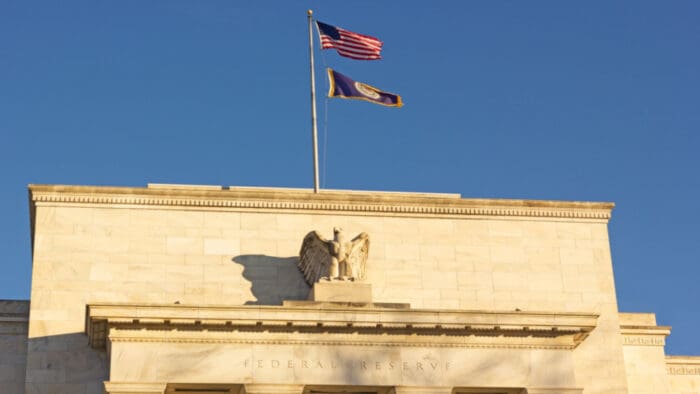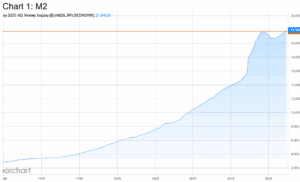Federal Reserve Chairman Jerome Powell’s highly anticipated update on the Fed’s Summary of Economic Projections this Wednesday will happen after a recent mix of surprising central bank activity from other countries, including monetary authorities in Australia and Canada making unexpected rate hikes and illustrating that inflation can be a hard beast to tame. At the same time, recent news that the eurozone has slipped into a recession is a painful reminder that fighting inflation can come at a high cost and engineering economic soft landings is challenging. In other developments, slower-than-expected growth in China is helping to keep energy prices down while Latin American countries that were among the first to raise interest rates appear to be winning the inflation battle. The following monetary developments surprised investors this week:
- Australia’s central bank, the Reserve Bank of Australia, unexpectedly increased its cash interest rate 25 basis points (bps) to 4.1% on Tuesday, its highest level in 11 years. Officials warned that additional rate hikes may be required to contain inflation despite the organization already hiking the rate 400 bps since May of last year—its fastest pace in history. Australia’s Consumer Price Index in April recorded a 6.8% increase with housing, food and non-alcoholic beverages, and transportation contributing the most to the overall headline number. The bank also eliminated a phrase in its outlook that said the bank believed medium-term inflation expectations remain well anchored with wages rising at a brisk pace of 0.8% quarter-over-quarter during the first quarter of this year, driving core inflation. The wage growth figures remain inconsistent with the central bank’s 2-3% annual inflation target and threaten entrenched expectations for moderating inflation.
- The Bank of Canada on Wednesday also surprised by hiking its overnight interest rate 25 bps to 4.75%, its first hike in four months. The latest hike places its rate at the highest level in 22 years. Policymakers maintain that the latest increase is needed to move closer to the central bank’s 2% inflation objective. In the middle of May, Statistics Canada reported that the Consumer Price Index for April rose 4.4% year-over-year (y/y) with higher rent prices and mortgage interest rates bumping up the headline number. Unlike the U.S., Canadian homeowners hold an elevated share of variable rate mortgages, comprising about a third of all mortgage loans, driving up household shelter costs during times of rising rates.
As many central banks including the U.S. Fed wrestle with achieving supply and demand equilibrium, the European Central Bank (ECB) appears to have caused a downturn in the region. Revised data this week showed that the European Union countries that use the euro in aggregate have slipped into a technical recession, or two consecutive quarters of negative real GDP growth. Previous data depicted the eurozone having flat GDP in the last quarter of 2022 and a 0.1% gain during the first three months of this year. However, this week’s revised data showed that both quarters experienced 0.1% GDP declines with Germany, which is Europe’s largest economy, leading the contraction. Even with the back-to-back contractions, however, inflation remains well above target, with May’s reading reflecting a 6.1% y/y gain in consumer prices. With the euro area in a technical recession but inflation over 3 times the central bank’s target, the ECB is expected to continue hiking at its meeting this Thursday.
China’s economy in the aftermath of the country terminating zero-tolerance Covid-19 lockdown policies has also disappointed. While consumer spending on services, such as entertainment and travel, has increased, sales of consumer goods have languished, causing China’s six state-run banks to lower their demand deposit rate to 0.20% from 0.25%. The goal is to entice savers to either spend their money or invest savings to help stimulate the economy. In another development, China reported today that factory gate charges, or prices charged by factories, dropped 4.6% in May y/y. It was the worst result since 2016 and driven by a decline in countries purchasing goods from China because monetary tightening around the globe has curtailed demand for both consumer and business products. Consumer prices in China were also weak, signaling depressed demand, climbing only 0.2% in May, which was up from the 0.1% gain in April. China’s weak economy is a bitter pill for OPEC + members but a positive development for consumers in many countries who were hit with high energy costs last year. In March, the International Energy Agency estimated that China’s oil consumption would increase to 2 million barrels a day, up 100,000 barrels. OPEC +, meanwhile, is trying to maintain oil prices as it braces for a potential global decline in demand from slowing economic growth in many countries. In October of last year and this past April, OPEC + announced reducing oil production by 3.6 billion barrels a day. After the announcements didn’t boost oil prices, Saudi Arabia announced it will unilaterally cut an additional 1 million barrels a day. Yet, Brent crude oil has declined from $88 a barrel as of early October to $75 as of this morning, greatly due to expectations of weak demand for the commodity in China.
While Chairman Powell continues to fight persistent inflation in the services industry while a tight labor market supports wage increases, various Latin American countries illustrate that price-pressures, while still a concern, can be dampened without sparking recessions. For example, Mexico recently reported that its cost of living climbed 5.84% y/y in May, which is still above the country’s 3% target but below the median analyst forecast of 5.88%. Brazil has had even more success, with consumer prices climbing only 3.94% y/y as of May while the median survey of analysts called for a 4.04% increase. Peru has also made progress, with its inflation rate dropping from 8.66% at the start of this year to 7.9% in May.
With central banks around the world upset about persistent disappointment on the inflationary front and punishing market players with higher costs of capital, will Powell throw the unexpected slider?
With irrational exuberance driving U.S. equities gauged by the S&P 500 Index up over 12% year-to-date, investors appear quite sanguine about this Wednesday’s Fed meeting. August of last year offered a similar framework, with the S&P 500 Index right around 4300 and the marketplace expecting little from the Fed. Chair Powell meanwhile ran out of the dugout and onto the mound explosively with a World Series mindset, striking out market bulls in eight short minutes during his Jackson Hole speech. The fed funds rate was a mere 2.38% at the time and at a lofty 5.13% today. With central banks around the world upset about persistent disappointment on the inflationary front and punishing market players with higher costs of capital, will Powell throw the unexpected slider?
Visit Traders’ Academy to Learn More the Consumer Price Index and Other about Economic Indicators.
Disclosure: Interactive Brokers Affiliate
Information posted on IBKR Campus that is provided by third-parties does NOT constitute a recommendation that you should contract for the services of that third party. Third-party participants who contribute to IBKR Campus are independent of Interactive Brokers and Interactive Brokers does not make any representations or warranties concerning the services offered, their past or future performance, or the accuracy of the information provided by the third party. Past performance is no guarantee of future results.
This material is from IBKR Macroeconomics, an affiliate of Interactive Brokers LLC, and is being posted with its permission. The views expressed in this material are solely those of the author and/or IBKR Macroeconomics and Interactive Brokers is not endorsing or recommending any investment or trading discussed in the material. This material is not and should not be construed as an offer to buy or sell any security. It should not be construed as research or investment advice or a recommendation to buy, sell or hold any security or commodity. This material does not and is not intended to take into account the particular financial conditions, investment objectives or requirements of individual customers. Before acting on this material, you should consider whether it is suitable for your particular circumstances and, as necessary, seek professional advice.
Disclosure: Futures Trading
Futures are not suitable for all investors. The amount you may lose may be greater than your initial investment. Before trading futures, please read the CFTC Risk Disclosure. A copy and additional information are available at ibkr.com.




















Join The Conversation
For specific platform feedback and suggestions, please submit it directly to our team using these instructions.
If you have an account-specific question or concern, please reach out to Client Services.
We encourage you to look through our FAQs before posting. Your question may already be covered!